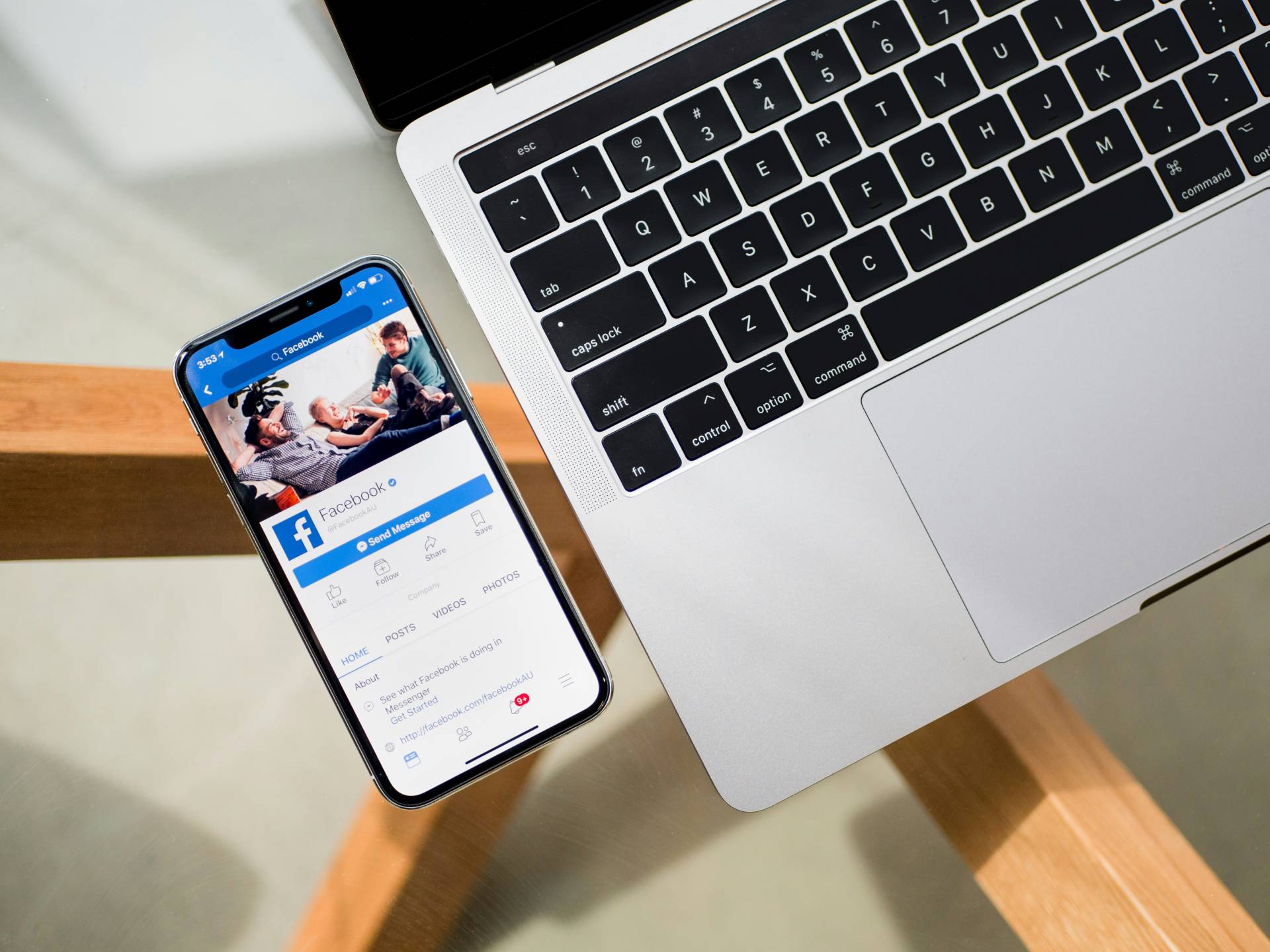In the realm of digital marketing, understanding Facebook CPM (Cost Per Mille) is crucial for marketers and advertisers. This guide will provide insights into the dynamics of Facebook CPM, helping marketers optimize their Facebook advertising strategies.
What is Facebook CPM?
In the world of digital marketing, CPM stands for “Cost Per Mille.” “Mille” is the Latin word for “thousand.” So, Facebook CPM is what an advertiser pays for one thousand people to see their ad on Facebook.
You calculate CPM using this formula:
CPM = (Ad spend / Impressions) * 1000.
Let’s break this down. Suppose you spend $10 on a Facebook ad. If this ad gets 2,000 views (impressions), your CPM would be $5. This calculation helps you understand how effectively you’re using your ad budget.
Why does Facebook CPM matter? It tells you how much bang you’re getting for your buck. A lower CPM means your ad reaches more people for less money. On the other hand, a higher CPM suggests you’re paying more to reach the same number of people.
But remember, a good CPM isn’t just about being low. It’s about balance. You want to reach enough of the right people without overspending. It’s not just about reaching lots of people; it’s about reaching the right people. That’s where the real value lies.
Understanding your Facebook CPM helps you make smarter marketing decisions. You can tweak your ads, target different audiences, or change your ad spend based on what the CPM tells you. This is crucial for making the most of your ad budget and ensuring your message hits home with the people you most want to reach.
In summary, knowing your Facebook CPM is like having a roadmap for your ad campaigns. It shows you where your money is going and helps guide your decisions. With this knowledge, you’re not just throwing ads out into the world and hoping for the best. You’re making informed choices, reaching more of the right people, and getting more value from every dollar you spend.
Importance of Facebook CPM
Knowing your Facebook CPM is crucial for two main reasons:
Campaign Budgeting: CPM helps you figure out how much reaching more people will cost. With a good grasp of your CPM, you can set realistic budgets for your ad campaigns. It’s like planning a road trip: you need to know how much gas you’ll need and what it will cost to reach your destination. Similarly, understanding CPM helps you plan how much money you’ll need to reach thousands of potential customers.
Campaign Performance: CPM isn’t just a standalone number. It’s a piece of a larger puzzle. When you look at CPM alongside other key performance indicators (KPIs), you get a clearer picture of how well your ad campaign is doing. Generally, a lower CPM means your campaign is performing well: you’re reaching more people without spending more money. Think of it like getting a better deal on that road trip gas – the less you spend per mile, the smoother your journey.
But there’s more to it. A low CPM combined with high engagement or conversion rates means you’re not just reaching people; you’re reaching the right people – those who are interested in what you’re offering. This is what makes CPM so important. It’s not just about reaching out blindly; it’s about reaching out efficiently and effectively.
Moreover, understanding your CPM helps in making informed decisions. If your CPM is high, it’s a signal to review and adjust your campaign. Maybe your ad’s target audience is too broad or too competitive. Perhaps the ad’s design or message doesn’t resonate with your audience. By keeping an eye on your CPM, you can tweak and improve your campaigns, ensuring they perform their best and deliver the value you expect.
In essence, Facebook CPM is more than just a number. It’s a crucial metric that guides you in allocating your budget wisely and optimizing your ad campaigns for better performance. It helps ensure that every dollar you spend is an investment towards reaching your business goals efficiently. So, understanding and monitoring your Facebook CPM isn’t just beneficial; it’s essential for the health and success of your digital advertising efforts.
Dynamics of Facebook CPM
Understanding the factors that affect Facebook CPM is like piecing together a puzzle. Several elements come into play, impacting how much you pay to get your ads seen by thousands. Let’s break down these elements:
Facebook Auction Environment
Facebook uses an auction model to determine ad costs, which hinges on supply and demand. This setup means that the ad space cost varies based on how many people want to advertise to the same audience at the same time. It’s similar to bidding in a real auction; if more people want the same thing, the price goes up. When you set up a Facebook ad campaign, you have tools and settings at your disposal to help control these costs. You can decide on your bid strategy and how aggressively you want to reach your target audience, which in turn influences your CPM.
User Value
Facebook prioritizes the user experience. They want to ensure that users don’t get bombarded with low-quality ads, which can be annoying and disrupt the browsing experience. Therefore, Facebook rewards ads that users react positively to by lowering their CPM. In contrast, ads that get negative feedback, like people hiding the ad, can see their costs go up. It’s a way of encouraging advertisers to create content that resonates with their audience, rather than just pushing sales. This approach ensures that ads on the platform maintain a certain standard and are as engaging and relevant as possible.
Estimated Action Rates
Facebook evaluates how likely it is that users will interact with your ad. This prediction, called the estimated action rate, affects your CPM. If Facebook thinks your ad will interest people and drive them to act—whether it’s liking your page, clicking your website, or making a purchase—your CPM can decrease. That’s because Facebook values ads that meet users’ needs and contribute to its objective of creating meaningful interactions. Ads that align with what people are interested in or what they are likely to do can reach more individuals at a lower cost.
In sum, the dynamics of Facebook CPM revolve around creating a balance. Facebook wants to keep users happy with quality content while providing advertisers a platform to reach their desired audience. By understanding these dynamics, you can better navigate the Facebook ad landscape. You can tweak your campaigns to align with these factors, potentially lowering your CPM and getting more value from your ad spend. This knowledge empowers you to create more effective ads that not only reach your target audience but do so in a cost-efficient manner, ensuring that your advertising efforts are as successful as possible.
How to Control Facebook CPM
Controlling your Facebook CPM may seem like a challenging task since you can’t change it directly. But, there are strategic ways to influence it indirectly:
Campaign Budget: You have the power to decide how much you want to spend on your Facebook ad campaigns. While you can’t directly dictate the cost per result, setting a clear budget helps manage your expenses. Think of your budget like a steering wheel. While it doesn’t control the road, it helps you navigate your spending effectively, ensuring you don’t overspend while trying to reach your desired audience.
Ad Quality: The quality of your ads plays a huge role in your CPM. High-quality, engaging ads often result in a lower CPM because they resonate better with users. This is akin to baking a cake; the better the ingredients (ad content) and the more appealing the decoration (ad design), the more people will want a piece (engage with your ad). By creating ads that captivate and appeal to your audience, you’re more likely to reduce your CPM, as Facebook rewards ads that users react positively to.
Target Audience: The audience you choose to target significantly affects your CPM. Targeting a broad audience can often lead to a lower CPM because your ad has the potential to reach more people with less specificity. On the other hand, targeting a niche audience, while potentially more expensive, can lead to higher engagement rates as your content is more tailored to that group. It’s like fishing: casting a wider net (broad audience) might catch more fish but targeting the right spot (niche audience) might catch the fish you really want. Adjusting your audience targeting can therefore help manage your CPM effectively, balancing between reach and relevance.
Remember, while you can’t control Facebook CPM directly, you can steer it in the right direction. By managing your campaign budget wisely, enhancing ad quality, and refining your target audience, you can indirectly influence your CPM. These adjustments require monitoring and tweaking, but with careful attention and strategy, you can optimize your Facebook ad campaigns for better performance and more efficient spending.
How to Lower Facebook CPM
Lowering your Facebook CPM is crucial for ensuring that you’re getting the most value out of your advertising budget. While you can’t directly set the price you pay per thousand impressions, there are several strategies you can employ to influence it indirectly:
Ad Refresh: Regularly updating your ad creatives is like giving your campaign a fresh coat of paint. This strategy helps to prevent ad fatigue among your audience, keeping interest and engagement high. When your ads continue to engage users, Facebook rewards you with a lower CPM. Think of it as keeping the conversation lively and interesting, so people stay tuned in.
Audience Targeting: The way you target your audience can significantly impact your CPM. Broadening your target audience might seem counterintuitive, but by reaching more people, you can actually decrease your CPM. However, it’s all about finding the right balance. You want your audience to be large enough to maintain cost-efficiency but targeted enough to ensure relevance. It’s like casting a net in fishing: too small, and you catch nothing; too large, and it’s hard to pull in. Find the right-sized net, and you’ll catch exactly what you’re looking for.
Placement Selection: Facebook offers a variety of places where your ads can show up, from the News Feed to Instagram Stories to Messenger. By enabling automatic placements, you allow Facebook to choose the most cost-effective spots for your ads. Alternatively, by manually selecting more placement options, you increase your ad’s chances of appearing where costs are lower. It’s akin to placing bets across different horses rather than putting all your money on one; it spreads the risk and can lead to better overall results.
Campaign Objectives: Your campaign’s objective significantly affects your CPM. By targeting objectives higher up in the funnel, such as brand awareness or reach, you may find that your CPM decreases. This is because these objectives tend to have larger target audiences and are focused more on visibility than immediate conversion. Think of it as building a relationship with potential customers. Starting with a friendly introduction (awareness) is often more cost-effective than asking for a commitment (purchase) right away.
By applying these strategies, you can effectively influence your Facebook CPM. Remember, the goal is to make your ad spend as efficient as possible, ensuring that every dollar you put into Facebook ads works harder for you. These strategies are not about cutting corners; they’re about smarter spending. By refreshing your ads, targeting wisely, choosing the right placements, and aligning your campaign objectives with your marketing funnel, you can lower your CPM while still reaching your desired audience effectively.
Facebook CPM: A Vital Metric for Advertisers
Understanding and managing Facebook CPM effectively can greatly improve your Facebook ad campaigns. This key metric helps you tweak your strategies, extend your reach, and get the best value for your ad spend.
In the fast-changing world of digital marketing, it’s crucial to stay informed and flexible. Knowing about Facebook CPM is a step toward mastering digital advertising. It’s not just about launching ads. It’s about making each ad count, reaching the right people, and spending your budget wisely.
Facebook CPM tells you how cost-effective your ads are. It affects how many people see your ads and how your ad budget gets used. So, it’s more than a number. It’s a reflection of your ad’s impact, your audience’s response, and your overall marketing success.
Advertisers who keep an eye on their CPM can spot trends, identify what’s working, and adjust what’s not. This constant cycle of monitoring and tweaking ensures that campaigns stay fresh, relevant, and effective.
Moreover, understanding Facebook CPM empowers you to make informed decisions. It allows you to balance your spending with your campaign goals, ensuring you’re not overspending to reach your audience. It helps you refine your approach, whether that means changing your target audience, tweaking your ad design, or adjusting your campaign settings.
In essence, Facebook CPM is more than a benchmark. It’s a guidepost that helps you navigate the complexities of digital advertising. By mastering this metric, you can make more informed decisions, achieve better results, and unlock the full potential of your Facebook ad campaigns.
As the digital marketing landscape evolves, so should your strategies. Embracing metrics like Facebook CPM and understanding their impact is crucial for any advertiser looking to make a mark in the digital space. It’s about staying ahead of the curve, maximizing efficiency, and turning every ad dollar into tangible results.
Strategies for Analyzing Facebook CPM
Interpreting Your CPM Values
Understanding your CPM in the context of your overall campaign objectives is crucial. A CPM that seems high may not be problematic if it aligns with a high-value target audience or achieves exceptional conversion rates. Similarly, a low CPM is not always a win if it results in low-quality leads or poor engagement. Analyzing CPM should always go hand-in-hand with evaluating other key performance indicators (KPIs) such as click-through rate (CTR), conversion rate, and return on ad spend (ROAS).
Comparing CPM Across Campaigns
Compare your Facebook CPM with past campaigns targeting similar audiences or with different objectives. This comparative analysis can reveal trends, help you identify what works best for your audience, and guide future budget allocations. Understanding the fluctuations and patterns in CPM across different campaigns can also help you pinpoint the most cost-effective strategies for reaching your audience.
Benchmarking Against Industry Standards
While Facebook CPM can vary greatly depending on numerous factors, benchmarking your CPM against industry averages provides a reference point. If your CPM is significantly higher than the industry average, it may indicate that your campaign settings, ad content, or audience targeting needs adjustment. Conversely, a CPM much lower than the average could suggest that your ads are performing exceptionally well, or it might mean you’re not targeting as precisely as you could be for optimal results.
Assessing Audience Response and Ad Relevance
A vital aspect of analyzing Facebook CPM involves understanding how your target audience interacts with your ads. High engagement rates and positive feedback indicate that your ads resonate well with your audience, which can often justify a higher CPM. On the other hand, low engagement or negative feedback can drive up your CPM and signal the need for a creative refresh or a reevaluation of your targeting parameters.
Seasonal and Market Influence on CPM
Recognize that CPM can be influenced by external factors such as seasonality, market competition, and global events. CPM rates can increase during peak shopping seasons or in highly competitive industries. By analyzing CPM in relation to these factors, you can better understand external influences on your ad costs and plan your campaign timings and budgeting more strategically.
In conclusion, Facebook CPM is a complex but vital metric that offers deep insights into the cost-effectiveness and impact of your advertising efforts. By adopting a comprehensive approach to analyzing CPM, you can enhance the effectiveness of your campaigns, achieve better alignment with your marketing goals, and optimize your advertising spend. Remember, a successful strategy involves looking beyond the surface numbers to understand the full story of your campaign’s performance and its resonance with your intended audience.
Facebook CPM FAQs
What is the CPM for Facebook?
CPM stands for “Cost Per Mille,” which means cost per 1,000 impressions. On Facebook, the CPM varies depending on factors such as target audience, ad quality, and competition. There’s no fixed rate, as it changes based on these variables.
How much does Facebook charge per 1,000 impressions?
The charge per 1,000 impressions (CPM) on Facebook can greatly vary. The cost depends on your campaign’s objective, audience targeting, ad placement, and other factors. Average costs can range widely, so it’s best to refer to recent reports or your specific ad campaign data for up-to-date information.
Why is my CPM so high on Facebook?
High CPM on Facebook can result from several factors:
- Targeting a highly competitive audience.
- Running ads in peak times or high-demand seasons.
- Lower ad quality or relevance scores.
- Poorly optimized ad campaigns.
What is the average CPM?
The average CPM can vary by industry, target market, and platform. On Facebook, it can change based on numerous factors. Industry reports can provide benchmark averages, but individual campaign results may differ.
How do I lower my FB CPM?
To lower your Facebook CPM, try:
- Improving ad relevance by targeting more specific audiences.
- Optimizing your ad creative and format for engagement.
- Testing different ad placements.
- Adjusting your bidding strategy and campaign objective.
- Running ads during less competitive times.
How do I lower my meta CPM?
Lowering your Meta CPM (which includes Facebook, Instagram, and other Meta platforms) involves:
- Refining your targeting to avoid overly broad or highly competitive segments.
- Enhancing ad creative for better engagement and relevance.
- Utilizing automatic bidding strategies for efficiency.
- Testing various ad formats and placements.
- Reviewing and optimizing your campaign settings regularly.
Is High CPM good or bad?
High CPM can be good or bad depending on the context:
- Good: If the high CPM results in high-quality leads or conversions that justify the cost.
- Bad: If the cost does not align with your marketing objectives or results in a low return on investment (ROI).
What is a good CPM?
A good CPM varies by industry, campaign goal, and market conditions. It’s considered “good” if it’s cost-effective for your specific objectives and results in a positive ROI. Compare your CPM with industry benchmarks and your past campaign performances to evaluate.
How do I make my CPM higher?
Typically, advertisers aim to lower their CPM. However, if you want to increase your CPM to reach a more premium audience or improve ad placement, you can:
- Target more competitive, high-value audience segments.
- Opt for premium ad placements.
- Increase your ad quality and design for better engagement.
- Adjust your bidding strategy to be more aggressive in higher-value contexts.
Featured Image Credit: Photo by Timothy Hales Bennett; Unsplash – Thank you!
















